15. Sweeney Todd: Also known as the Barber of Seville, the lunacy of Sweeney Todd was 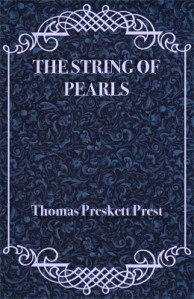 first brought to us in the pages of a penny dreadful titled The String of Pearls (1846). A lunatic barber who killed his customers while they sat in his barber chair, Todd was a truly evil character without mercy or conscience.
first brought to us in the pages of a penny dreadful titled The String of Pearls (1846). A lunatic barber who killed his customers while they sat in his barber chair, Todd was a truly evil character without mercy or conscience.
Some thought him a careless enough harmless fellow, with not much sense in him,
and at times they almost considered he was a little cracked; but there were
others, again, who shook their heads when they spoke of him; and while they
could say nothing to his prejudice, except that they certainly considered he was
odd, yet, when they came to consider what a great crime and misdemeanour it
really is in this world to be odd, we shall not be surprised at the ill-odour in which Sweeney Todd was held.
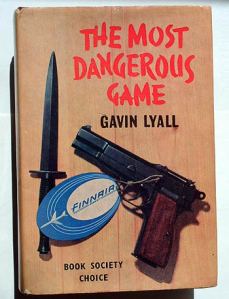 14. General Zaroff: We are introduced to the evil General Zaroff in the pages of Richard Connell’s The Most Dangerous Game (Colliers Weekly, 1924). Zaroff considers himself a hunter of the titular prey, human beings. He set himself up in a palatial estate on an isolated island, where he can hunt people to his heart’s content, reveling in the adrenaline high associated with the thrill of such a risk filled pursuit. Though he fancies himself a hunter, in reality, Zaroff is nothing more than a thrill killer.
14. General Zaroff: We are introduced to the evil General Zaroff in the pages of Richard Connell’s The Most Dangerous Game (Colliers Weekly, 1924). Zaroff considers himself a hunter of the titular prey, human beings. He set himself up in a palatial estate on an isolated island, where he can hunt people to his heart’s content, reveling in the adrenaline high associated with the thrill of such a risk filled pursuit. Though he fancies himself a hunter, in reality, Zaroff is nothing more than a thrill killer.
The world is made up of two classes – the hunters and the huntees.
13. Dr. Moreau: The titular villain from H.G. Wells’ The Island of Dr. Moreau 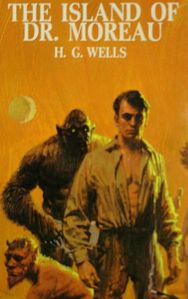 (Heinemann, Stone & Kimball, 1896), the doctor’s mad experiments create creatures that are half animal, half man. Moreau keeps his creations in line through strict controls, including a code by which they must live, called The Law, through which he attempts to deprive them of their base animal natures and culture them with subjugation and fear.
(Heinemann, Stone & Kimball, 1896), the doctor’s mad experiments create creatures that are half animal, half man. Moreau keeps his creations in line through strict controls, including a code by which they must live, called The Law, through which he attempts to deprive them of their base animal natures and culture them with subjugation and fear.
They had certain Fixed Ideas implanted by Moreau in their minds which absolutely bounded their imaginations. They really were hypnotized, had been told certain things were impossible, and certain things were not to be done, and these prohibitions were woven into the texture of their minds beyond any possibility of disobedience or dispute.
12. Mrs. Eleanor Iselin: The twisted mother from Richard Condon’s The Manchurian 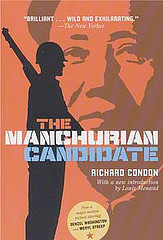 Candidate (McGraw-Hill, 1959), Mrs. Iselin is so obsessed with power, she will do anything to see her husband elected as president, including and up to having her own son brainwashed in a foreign country as part of an assassination scheme. Oh, and did I mention she’s a communist attempting to help the KGB overthrow America? The novel was adapted into a film with Angela Lansbury filling the chilling role.
Candidate (McGraw-Hill, 1959), Mrs. Iselin is so obsessed with power, she will do anything to see her husband elected as president, including and up to having her own son brainwashed in a foreign country as part of an assassination scheme. Oh, and did I mention she’s a communist attempting to help the KGB overthrow America? The novel was adapted into a film with Angela Lansbury filling the chilling role.
Amateur psychiatric prognosis can be fascinating when there is absolutely nothing else to do
11. Danglars: The wicked villain from Alexandre Dumas’ classic revenge tale, The Count of 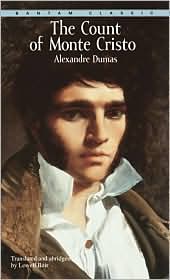 Monte Cristo (Journal des Debats, 1844) has so many qualities that make him easy to despise. He was the original frenemy, a friend of the novel’s protagonist, Edmond Dantes, yet he had no trouble whatsoever, sending an anonymous note implicating Dantes as a traitor that results in him being sentenced to the prison Chateau d’If. It is here that Dantes learns what he needs to know in order the gain his revenge.
Monte Cristo (Journal des Debats, 1844) has so many qualities that make him easy to despise. He was the original frenemy, a friend of the novel’s protagonist, Edmond Dantes, yet he had no trouble whatsoever, sending an anonymous note implicating Dantes as a traitor that results in him being sentenced to the prison Chateau d’If. It is here that Dantes learns what he needs to know in order the gain his revenge.
There is neither happiness nor unhappiness in this world; there is only the comparison of one state with another. Only a man who has felt ultimate despair is capable of feeling ultimate bliss. It is necessary to have wished for death in order to know how good it is to live…..the sum of all human wisdom will be contained in these two words: Wait and Hope.”

